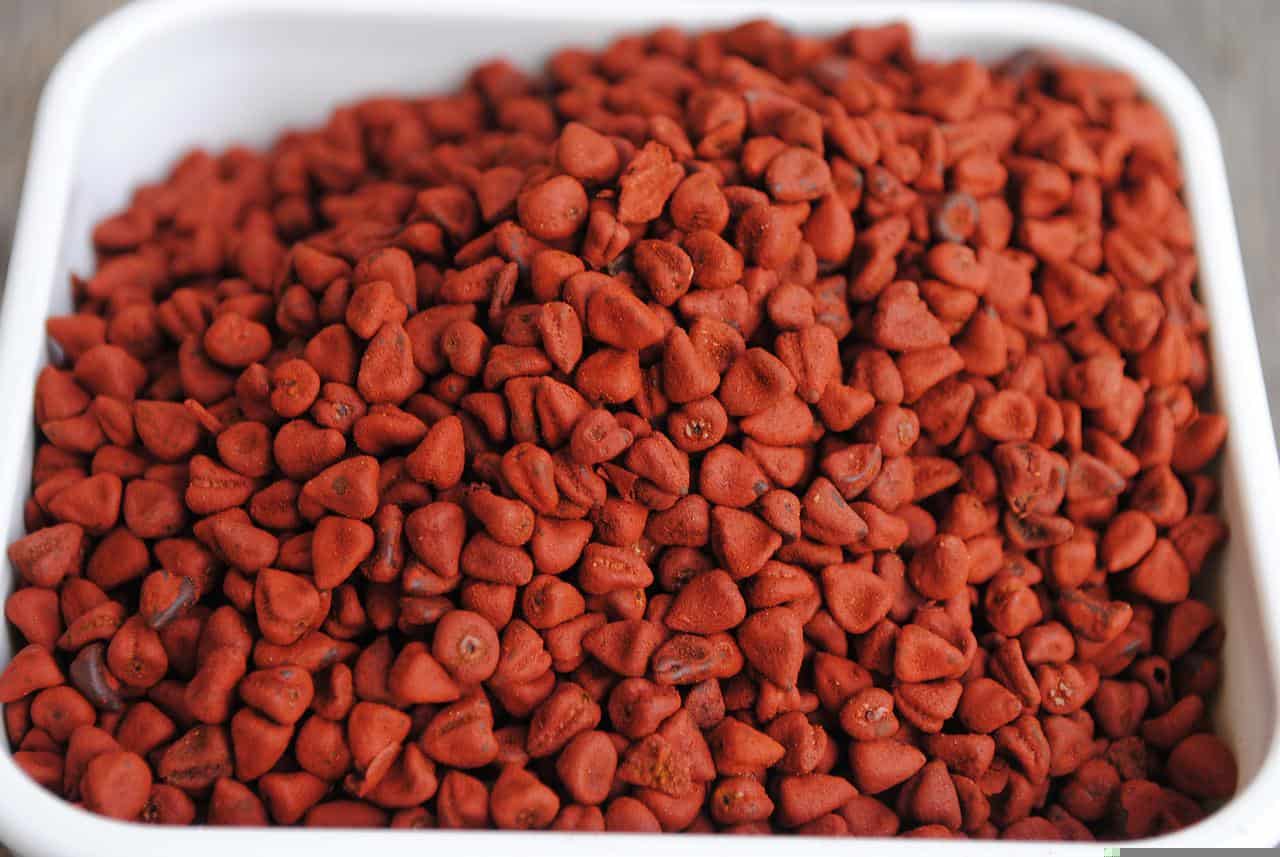ACHIOTE(Bixa orellana), of the Bixaceae family, is also known as annato, bija, onoto and urucú.
Distribution: A native plant found in the warmer regions of the tropical Americas, achiote has been used for centuries by indigenous people as a colorant, condiment and medicine. Today, it is cultivated here as a popular food colorant for rice and vegetables.
Botanical Description: A handsome bush that reaches 5 meters (15 feet) in height and has ovate, heart-like leaves and pink flowers. The unusual seed capsules are covered with soft, red spines and contain numerous seeds with a bright reddish-orange resin.
Medicinal Uses: Although achiote is well known as a dye and food colorant, itis also used medicinally. The leaves are reported to be useful in a tea for the treatment of dandruff and hair loss. The seeds and roots have been used as a treatment for fevers and dysentery and also as an aphrodisiac. The leaves are also used for headaches.
Preparation: The bright reddish-orange res in on the seeds can be prepared by cooking the seeds in hot water to separate the resin from the seeds. Strain the seeds and boil the solution until it becomes a paste. This paste can be used as a food colorant or dye for material. Itis also high in beta-carotene.
The leaves are boiled in water to make a tea for use as a hair rinse to combat dandruff and hair loss. The roots can be dug up, washed and chopped into small pieces, which are boiled in water to make a tea for fevers and diarrhea. It is also said to have a tonic effect on the kidneys and sex glands.
Notes: The seeds are easily germinated in pots or plastic nursery bags filled with average, moist soil. These hardy seedlings can be transplanted in several months to permanent sites around the home to serve as curious ornamentals, which can serve as a fence border and are a useful source of dye, food colorant and medicine.






